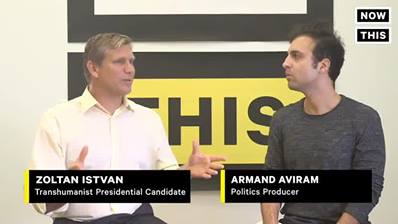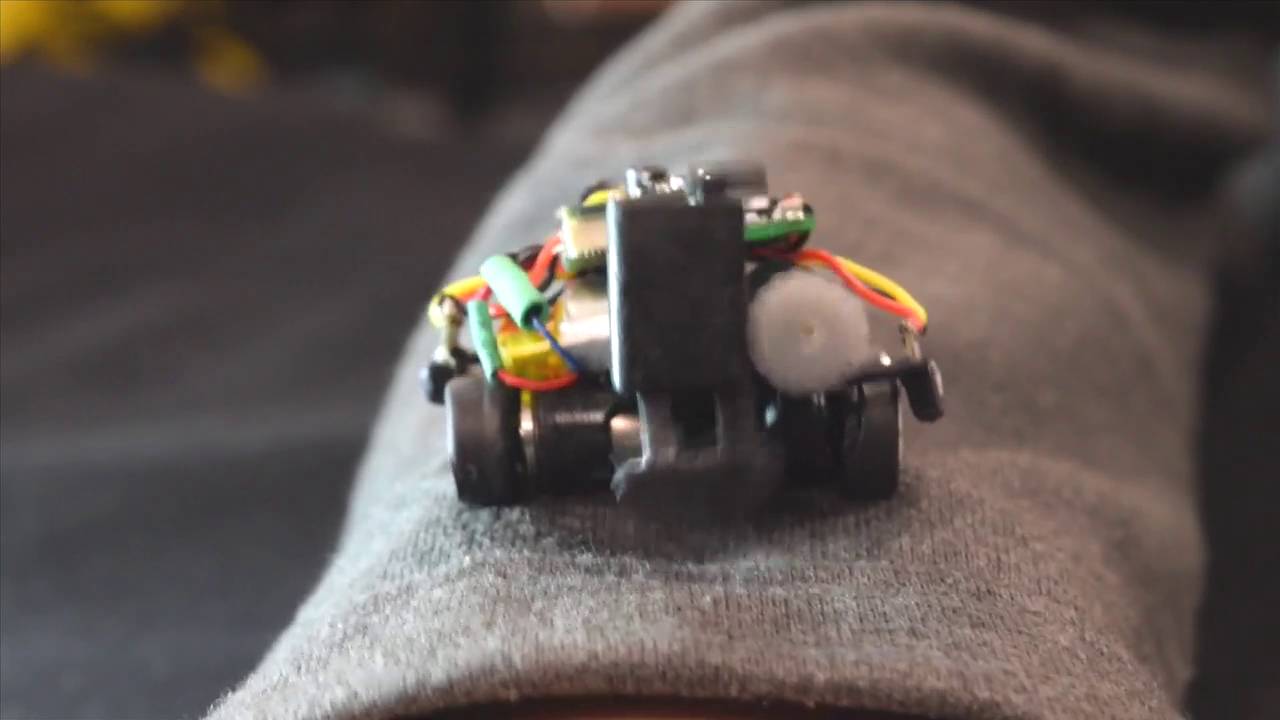Page 10790
Oct 22, 2016
Withholding amino acid depletes blood stem cells, researchers say
Posted by Steve Hill in categories: biotech/medical, life extension
Rebooting the immune system just got a bit easier. This could potentially be used to treat autoimmune diseases and just as exciting some of the aging processes.
A dietary approach to depleting blood stem cells may make it possible to conduct bone marrow transplantations without the use of chemotherapy or radiation therapy, according to researchers at the Stanford University School of Medicine.
The discovery, made in collaboration with researchers at the University of Tokyo, may also become a new way to treat certain cancers without chemo or radiation, which can cause severe side effects.
Continue reading “Withholding amino acid depletes blood stem cells, researchers say” »
Oct 22, 2016
Give a 3D printer artificial intelligence, and this is what you’ll get
Posted by Elmar Arunov in categories: 3D printing, information science, robotics/AI

A London-based startup has combined some of today’s most disruptive technologies in a bid to change the way we’ll build the future. By retrofitting industrial robots with 3D printing guns and artificial intelligence algorithms, Ai Build has constructed machines that can see, create, and even learn from their mistakes.
When CEO and founder Daghan Cam was studying architecture, he noticed a disconnect between small-scale manufacturing and large-scale construction. “On one side we have a fully automated production pipeline,” Cam explained at a recent conference in London. “On the other side we’re completely dependent on human labor.” With the emergence of more efficient printing technologies, he thought there must be a better way.
Continue reading “Give a 3D printer artificial intelligence, and this is what you’ll get” »
Oct 21, 2016
Bryan Johnson invests $100 million in Kernel to unlock the power of the human brain
Posted by Dan Kummer in categories: biotech/medical, neuroscience
Earlier this year, former Braintree founder Bryan Johnson publicly announced his plans to forge Kernel, a company with the sole purpose of building hardware and software to augment human intelligence. Today, Johnson is investing $100 million of his own money into the concept, looking to rapidly double the size of his team, shore up a portfolio of intellectual property and prepare for animal and human testing trials for a forthcoming device aimed at reducing cognitive deficiencies for sufferers of conditions like Alzheimer’s and dementia.
Kernel is still very much in the planning stages, but the idea is rooted in the research of Theodore Berger, the company’s chief science officer. The futuristic device, which Johnson says might actually not need to be implanted beneath the skull at all, is designed to facilitate communication between brain cells by hacking the “neural code” that enables our brain to store and recall key information. With proper implementation, such a device could correct faulty signals to mend a cognitive impairment.
“We have done this before with biology and genomics,” said Johnson in an interview. “We can program yeast to do a specific function. We can expect the same path with neural code.”
Oct 21, 2016
In NYC today I did a live interview at with Armand Aviram
Posted by Zoltan Istvan in categories: economics, geopolitics, transhumanism

Lots of topics discussed including my campaign, transhumanism, and my support of a Universal Basic Income:
We’re with 2016 Presidential candidate, Zoltan Istvan, who is running under the Transhumanist Party. What’s transhumanism? Find out and let us know what your questions are for Zoltan.
Oct 21, 2016
Roving robots may roam your clothes
Posted by Shane Hinshaw in categories: robotics/AI, wearables

If you don’t like the thought of bugs crawling all over you, then you might not like one possible direction in which the field of wearable electronics is heading. Researchers from MIT and Stanford University recently showcased their new Rovables robots, which are tiny devices that roam up and down a person’s clothing – and yes, that’s as the clothing is being worn.
The centimeter-sized robots hang on by pinching the fabric between their wheels, with the physically-unconnected wheel on the underside of the material held against the others simply by magnetic attraction.
Oct 21, 2016
UK demos self-driving cars talking among themselves
Posted by Shane Hinshaw in categories: robotics/AI, transportation
While self-driving vehicles will be revolutionary, having self-driving vehicles communicate with one another and with road infrastructure will take that revolution to the Nth degree. In a UK-first, a cross-company collaborative demonstration of these technologies working together has taken place.
Oct 21, 2016
ESA’s Mars Lander May Have Exploded On Impact
Posted by Bruce Dorminey in category: space
ESA’s Mars Test Lander likely exploded on impact after dropping from a height of four kilometers after its retrorockets prematurely switched off. Just another lesson in how difficult these missions actually are; a cautionary tale for new space entrepreneurs.
New NASA images of the Martian surface indicate that the European Space Agency’s (ESA) Schiaparelli ExoMars 2016 test lander likely crashed from a height of at least two to four kilometers as it made its way through the Red planet’s thin atmosphere.
Surface markings imaged by NASA’s Mars Reconnaissance Orbiter and released via NASA JPL, identifies new markings believed to be related to ESA’s Schiaparelli Entry, Descent and Landing Demonstrator Module (EDM), which arrived at Mars on Oct. 19th. Schiaparelli may have exploded on impact after impacting at speeds greater than 300 kilometers per hour.
Continue reading “ESA’s Mars Lander May Have Exploded On Impact” »
Oct 21, 2016
Microsoft reaches ‘human parity’ with new speech recognition system
Posted by Shailesh Prasad in category: robotics/AI
Researchers at Microsoft have published details of new speech recognition technology that they say transcribes conversational speech as well as a human does. “We’ve reached human parity,” says Microsoft’s chief speech scientist Xuedong Huang in a statement. “This is an historic achievement.”
The system’s word error rate is reported to be 5.9 percent, which Microsoft says is “about equal” to professional transcriptionists asked to work on speech taken from the same Switchboard corpus of conversations. It uses neural language models that group similar words together, allowing for efficient generalization. Microsoft plans to use the technology in Cortana, its personal voice assistant for Windows and the Xbox One, as well as speech-to-text transcription software.
Although the results are impressive, it’s far from an endgame for speech recognition. Microsoft still needs to tune the technology to work as well with conversations in a wider range of more challenging real-life situations and with a broader selection of voices. And for use cases such as Cortana, much of the difficulty comes from teaching the artificial intelligence to understand the meaning of words and act on them, not just accurately hear them.
Continue reading “Microsoft reaches ‘human parity’ with new speech recognition system” »
Oct 21, 2016
Autism study identifies defect in sufferers’ cells and existing medication could treat it
Posted by Dan Kummer in categories: biotech/medical, genetics, neuroscience

Scientists at Boston Children’s Hospital identified a defect that causes a genetic disorder in 50% of autism sufferers — and two existing classes of drugs that counter the defect.














